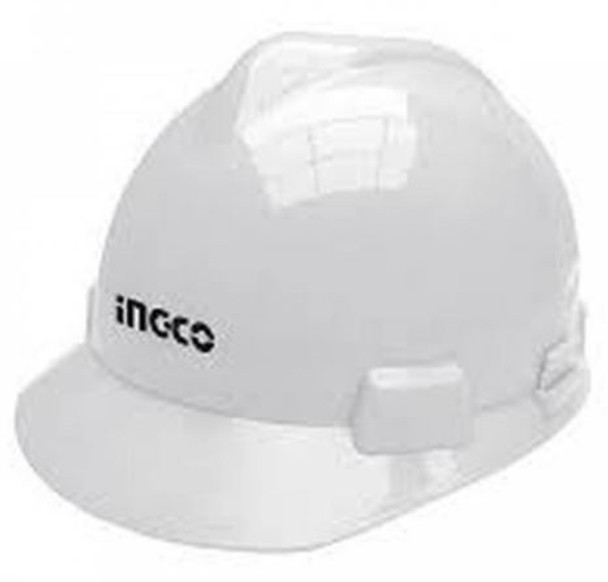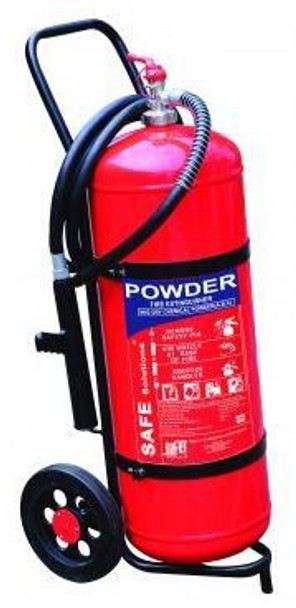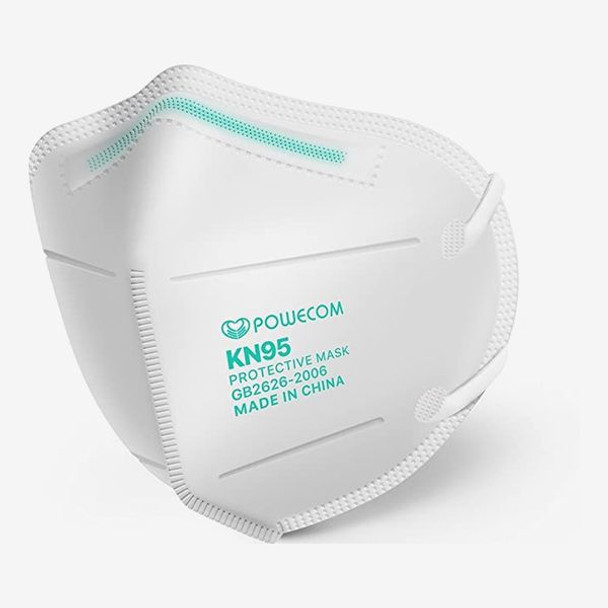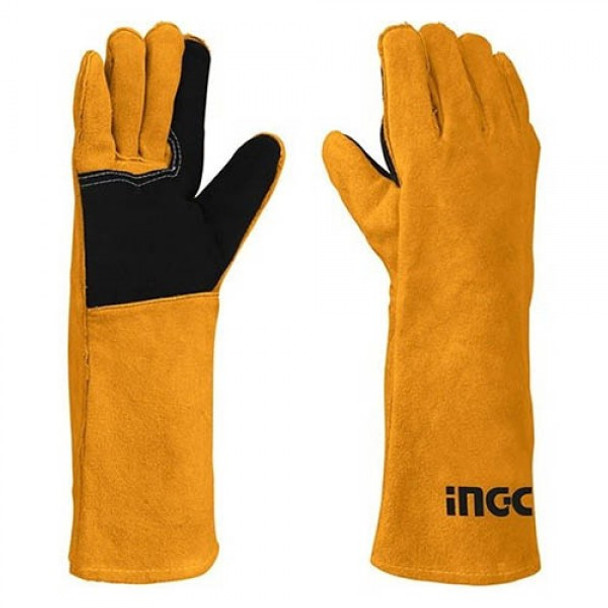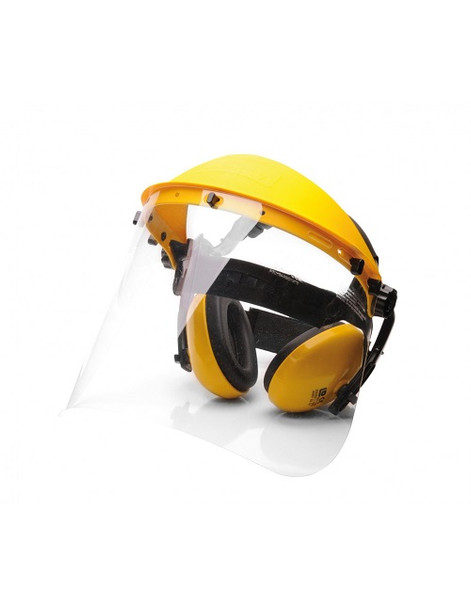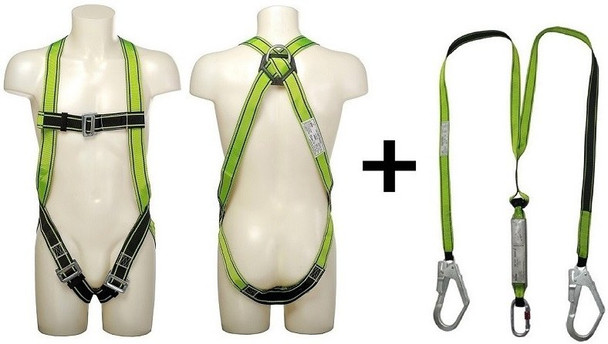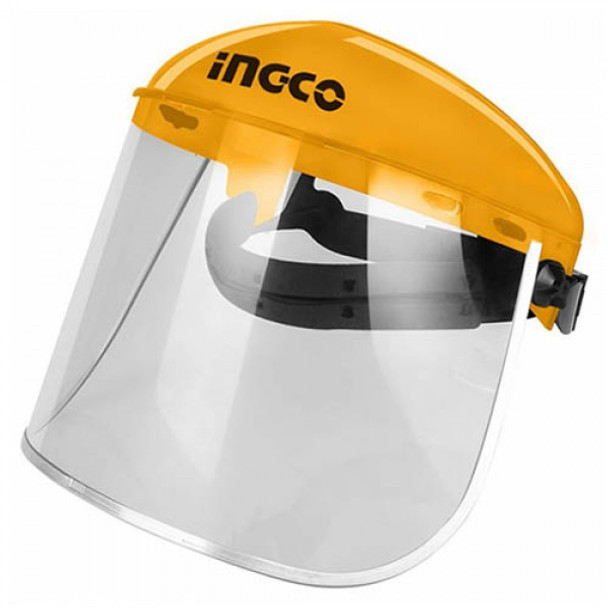How to Choose the Right Safety Equipment for Your Workplace
In the ever-evolving landscape of workplace safety, the importance of selecting the right safety equipment cannot be overstated. Whether you operate in a bustling industrial setting, a construction site, welding workshop or an office environment, ensuring the well-being of employees is paramount. Choosing the appropriate safety equipment involves a understanding of specific workplace hazards, regulatory requirements, and the unique needs of your workforce.
Ingco Safety Harness Full Body Protection Kit 50mm HSH501502
A crucial aspect of this commitment lies in the thoughtful selection and deployment of the right safety equipment. . Firstly, the type of hazard prevalent in your work environment plays a crucial role in determining the appropriate Personal Protective Equipment (PPE). Conducting a thorough risk assessment helps identify potential hazards, such as flying debris, height-related risks, or exposure to hazardous substances. This evaluation guides the selection of PPE tailored to each task and situation. Quality and durability are paramount considerations too; opting for PPE made of high-quality materials that meet industry standards ensures its performance and longevity. Checking certifications, like ANSI Z89.1 for helmets or ASTM F1790 for gloves, is essential. Equally important is the fit and comfort of the PPE, as it directly impacts effectiveness and usability. Ensuring proper measurement, consulting sizing charts, and allowing workers to try on and adjust the equipment contribute to a comfortable and secure fit. Maintenance and storage considerations involve choosing PPE that is easy to clean, resistant to moisture, and follows manufacturer guidelines. Lastly, balancing cost and availability without compromising safety is vital, requiring a thorough comparison of options, consideration of potential reuse, and strategic planning to ensure a steady supply without delays. If you are curious about the Best Safety Work Procedures for Welders in Nigeria, click here
Join us on this journey as we prioritize safety, empower decision-makers, and create a safer, more secure working environment for everyone. Your commitment to choosing the right safety equipment is not just an investment in compliance; it's an investment in the well-being and success of your workforce.
Understanding Workplace Hazards
One of the first steps to choosing the right safety equipment for your workplace is to understand the potential hazards that you and your employees may face. Different industries have different types of risks, and some hazards may be more common or severe than others. Therefore, it is important to identify the industry-specific risks that apply to your workplace, and conduct comprehensive workplace hazard assessments to evaluate the level of exposure and the possible consequences of each hazard.
Identifying Industry-Specific Risks
Depending on the nature of your work, you may encounter various hazards that can affect your health and safety. Some examples of industry-specific risks are:
- Construction: Falls from heights, electrocution, falling objects, noise, dust, vibration, etc.
- Manufacturing: Machinery, chemicals, fire, explosion, ergonomic, etc.
- Healthcare: Biological, chemical, radiation, needlestick, violence, etc.
- Agriculture: Animals, pesticides, machinery, heat, etc.
- Mining: Dust, gas, fire, explosion, noise, vibration, etc.
INGCO Safety Helmet HSH09
Conducting Comprehensive Workplace Hazard Assessments
Once you have identified the industry-specific risks that may affect your workplace, you should conduct a comprehensive workplace hazard assessment to evaluate the likelihood and severity of each hazard, and the potential impact on your workers and the environment. A workplace hazard assessment is a systematic process of identifying, analyzing, and controlling hazards in your workplace. It involves the following steps:
- Walk around your workplace and observe the work activities, processes, equipment, materials, and environment. Look for any hazards that may cause harm or damage, such as physical, chemical, biological, ergonomic, or psychosocial hazards.
- Talk to your workers and ask them about their concerns, experiences, and suggestions regarding workplace hazards.
- Review your records and documents, such as accident reports, injury logs, inspection reports, safety audits, etc.
- Prioritize the hazards based on their risk level, which is determined by the combination of likelihood and severity.
- Implement control measures to eliminate or reduce the hazards and their associated risks.
DCP 25kg Fire Extinguisher
Assessing Workplace Needs
Another essential step to choosing the right safety equipment for your workplace is to assess the specific needs and requirements of your workplace and your workers. Different workplaces may have different needs and preferences, depending on the size, layout, location, culture, and budget of the organization. Therefore, it is important to tailor your safety measures to your workplace requirements, and involve your employees in the assessment process.
Tailoring Safety Measures to Workplace Requirements
When choosing the right safety equipment for your workplace, you should consider the following factors that may affect your workplace requirements:
- Size: Workplace size may determine the quantity and variety of safety equipment that you need. For example, a large workplace may need more safety equipment than a small one, or a workplace with multiple floors or buildings may need different types of safety equipment for each area.
- Layout: The layout of your workplace may influence the placement and accessibility of safety equipment. For example, a workplace with narrow corridors or crowded spaces may need more compact or portable safety equipment, or a workplace with remote or isolated areas may need more communication or emergency equipment.
- Location: The location of your workplace may affect the suitability and durability of safety equipment. For example, a workplace in a hot or humid climate may need more cooling or ventilation equipment, or a workplace in a harsh or hazardous environment may need more protective or resistant equipment.
- Culture: Culture may impact the acceptance and usage of safety equipment. For example, a workplace with a strong safety culture may have more awareness and compliance with safety equipment, or a workplace with a diverse workforce may need more inclusive or adaptable safety equipment.
- Budget: Budget constraints may limit the affordability and availability of safety equipment. For example, a workplace with a low budget may need more cost-effective or reusable safety equipment, or a workplace with a high budget may have more options or choices for safety equipment.
Revolta Pole Strap PN 248-OR Karam
Involving Employees in the Assessment Process
When assessing your workplace needs, you should also involve your employees in the process, as they are the ones who will use the safety equipment and benefit from it. To involve your employees in the assessment process, you can use various methods, such as:
- Surveys or questionnaires: You can use surveys or questionnaires to collect quantitative and qualitative data from your employees, such as their opinions, ratings, or suggestions on safety equipment.
- Interviews or focus groups: You can use interviews or focus groups to gather more in-depth and detailed information from your employees, such as their experiences, stories, or concerns about safety equipment.
- Observations or demonstrations: You can use observations or demonstrations to observe and evaluate the actual use and performance of safety equipment by your employees, such as their behaviors, actions, or outcomes with safety equipment.
- Trials or tests: You can use trials or tests to allow your employees to try and compare different types or models of safety equipment, such as their comfort, fit, or functionality with safety equipment.
Categories of Safety Equipment
One of the most important aspects of choosing the right safety equipment for your workplace is to know the different categories of safety equipment and their functions. Safety equipment can be classified into various categories, depending on the type of hazard they protect against and the part of the body they cover. Here are some of the common categories of safety equipment that you may need for your workplace:
Head Protection:
Head protection is designed to protect the head from impact, penetration, or electrical hazards. Examples of head protection include hard hats, helmets, bump caps, and hoods. Head protection should be worn whenever there is a risk of falling or flying objects, contact with overhead structures, exposure to high voltage, or exposure to extreme temperatures.
INGCO Safety Helmet HSH10
Eye and Face Protection:
Eye and face protection is designed to protect the eyes and face from injury or infection caused by dust, particles, chemicals, radiation, or other hazards. Examples of eye and face protection include safety glasses, goggles, face shields, and masks. Eye and face protection should be worn whenever there is a risk of eye or face injury from flying or falling objects, splashes or sprays of liquids or gases, exposure to harmful light or lasers, or exposure to infectious agents.
INGCO Welding Goggles HSGW01, Safety Welding Goggles
Respiratory Protection:
Respiratory protection is designed to protect the respiratory system from inhaling harmful substances, such as dust, fumes, vapors, gases, or biological agents. Examples of respiratory protection include respirators, masks, filters, and cartridges. Respiratory protection should be worn whenever there is a risk of respiratory injury or illness from exposure to airborne contaminants, oxygen-deficient environments, or infectious agents.
KN95 PROTECTIVE MASK
Hand Protection:
Hand protection is designed to protect the hands and arms from cuts, burns, abrasions, punctures, or chemical exposure. Examples of hand protection include gloves, mittens, sleeves, and gauntlets. Hand protection should be worn whenever there is a risk of hand or arm injury from contact with sharp or rough objects, hot or cold surfaces, corrosive or toxic substances, or biological agents.
Welding Leather gloves - INGCO HGVW02
Foot Protection:
Foot protection is designed to protect the feet and legs from impact, compression, puncture, or chemical exposure. Examples of foot protection include safety shoes, boots, toe guards, and leggings. Foot protection should be worn whenever there is a risk of foot or leg injury from falling or rolling objects, sharp or pointed objects, slippery or uneven surfaces, or hazardous substances.
Safety Boot SSH02S1P 45 INGCO
Hearing Protection:
Hearing protection is designed to protect the hearing from noise-induced hearing loss or tinnitus. Examples of hearing protection include ear plugs, ear muffs, and earphones. Hearing protection should be worn whenever there is a risk of hearing damage from exposure to loud or continuous noise, such as machinery, tools, or music.
PPE Protection Kit- YELLOW
High-Visibility Clothing:
High-visibility clothing is designed to make the wearer more visible and noticeable in low-light or high-traffic conditions. Examples of high-visibility clothing include vests, jackets, shirts, pants, and hats. High-visibility clothing should be worn whenever there is a risk of being struck by moving vehicles, equipment, or people, such as on roads, construction sites, or warehouses.
Rhino Weld Welders Split Leather Welding Jacket
Fall Protection:
Fall protection is designed to prevent or minimize the consequences of falls from heights. Examples of fall protection include harnesses, lanyards, lifelines, anchors, and nets. Fall protection should be worn whenever there is a risk of falling from elevated surfaces, such as roofs, scaffolds, or ladders.
Safety Harness Lanyard D/b MFK Vaultex
Selecting the Right Safety Equipment
After you have identified the categories of safety equipment that you need for your workplace, the next step is to select the right safety equipment from the available options. There are many factors that you should consider when selecting the right safety equipment, such as the specifications, comfort, usability, and environmental factors of the equipment. Here are some of the tips that you can follow to select the right safety equipment for your workplace:
Understanding Equipment Specifications
One of the first things that you should do when selecting the right safety equipment is to understand the specifications of the equipment, such as the features, functions, performance, quality, and standards of the equipment. You should read the labels, instructions, manuals, and certifications of the equipment to learn about the specifications of the equipment. You should also compare the specifications of different equipment to find the best fit for your workplace needs and requirements. Some of the questions that you should ask when understanding the specifications of the equipment are:
- What are the features and functions of the equipment? How do they work and what do they do?
- What are the performance and quality of the equipment? How effective and reliable are they?
- What are the standards and regulations of the equipment? How do they comply with the relevant safety and health laws and codes?
- What are the limitations and warnings of the equipment? How do they affect the safety and usability of the equipment?
Evaluating Comfort and Usability
Another thing that you should do when selecting the right safety equipment is to evaluate the comfort and usability of the equipment, such as the fit, size, weight, shape, and style of the equipment. You should try on the equipment, or ask your employees to try on the equipment, to test the comfort and usability of the equipment. You should also observe the equipment in action, or ask your employees to demonstrate the equipment, to see how the equipment works and performs in real situations. Some of the questions that you should ask when evaluating the comfort and usability of the equipment are:
- How does the equipment fit and feel? Is it too tight, loose, heavy, or bulky?
- How does the equipment affect the mobility and dexterity of the wearer? Does it restrict or interfere with the movement or tasks of the wearer?
- How does the equipment suit the personal preferences and needs of the wearer? Does it match the style, color, or culture of the wearer?
- How does the equipment interact with other PPE or equipment? Does it complement or conflict with other PPE or equipment?
Fire Resistant Coverall
Training and Familiarization
One of the ways that you can train and familiarize your employees with the safety equipment is to provide employee training programs on the safety equipment. Employee training programs can teach your employees the knowledge and skills that they need to use and maintain the safety equipment, such as the purpose, function, operation, and care of the safety equipment. Employee training programs can also inform your employees of the policies and procedures that they need to follow when using and maintaining the safety equipment, such as the rules, regulations, and responsibilities of the safety equipment. Employee training programs can be delivered in various formats, such as online, classroom, or on-the-job training, depending on the availability, accessibility, and suitability of the training methods. Employee training programs should be conducted before the employees use the safety equipment for the first time, and repeated periodically or whenever there is a change in the safety equipment or the employee.
Another way that you can train and familiarize your employees with the safety equipment is to conduct regular drills and simulations on the safety equipment. Drills and simulations can practice and test your employees’ ability and readiness to use and maintain the safety equipment, such as the speed, accuracy, and efficiency of the safety equipment. Drills and simulations can also expose and prepare your employees for the potential hazards and emergencies that they may encounter when using and maintaining the safety equipment, such as the risks, challenges, and scenarios of the safety equipment. Drills and simulations can be performed in various settings, such as real, mock, or virtual environments, depending on the feasibility, realism, and safety of the practice methods. Drills and simulations should be conducted regularly or randomly, and evaluated and reviewed after each session.
Safety Boot (Shoe) INGCO (SSH02S1P.39)
Supplier Evaluation
The supplier of the safety equipment can affect the quality, availability, and cost of the safety equipment, and the service, support, and warranty of the safety equipment. Therefore, you should research and vet the safety equipment suppliers, and assess their reputation and reliability, before purchasing or procuring the safety equipment from them. Here are some of the tips that you can follow to evaluate the supplier of the safety equipment for your workplace:
Researching and Vetting Safety Equipment Suppliers
One of the ways that you can evaluate the supplier of the safety equipment is to research and vet the safety equipment suppliers, such as their background, history, credentials, and portfolio of the safety equipment suppliers. Conduct a thorough and comprehensive research on the safety equipment suppliers, using various sources and methods, such as online, offline, or word-of-mouth research, to gather as much information and data as possible about the safety equipment suppliers. You should also verify and validate the information and data that you have collected, using various criteria and indicators, such as references, testimonials, or certifications, to ensure the accuracy and authenticity of the information and data. Some of the questions that you should ask when researching and vetting the safety equipment suppliers are:
- What is the background and history of the supplier? How long have they been in the business and what is their experience and expertise in the safety equipment industry?
- What are the credentials and qualifications of the supplier? What are the licenses, permits, or accreditations that they have and what are the standards or regulations that they follow?
- What is the portfolio and performance of the supplier? What are the types, brands, or models of the safety equipment that they offer and what are the features, functions, or specifications of the safety equipment?
- What are the reviews and ratings of the supplier? What are the feedback, comments, or complaints that they have received from their previous or current customers and what are the ratings or scores that they have achieved from the relevant authorities or agencies?
Assessing Supplier Reputation and Reliability
Compare and contrast the reputation and reliability of the safety equipment suppliers, using various factors and measures, such as quality, availability, cost, service, support, and warranty, to determine the best value and fit for your workplace needs and requirements. You should also negotiate and communicate with the safety equipment suppliers, using various skills and techniques, such as bargaining, persuasion, or collaboration, to establish and maintain a mutually beneficial and long-term relationship with the safety equipment suppliers. Some of the questions that you should ask when assessing the reputation and reliability of the safety equipment suppliers are:
- What is the quality of the safety equipment that the supplier provides? How effective, reliable, and durable are the safety equipment and how do they meet or exceed the expectations and standards of the customers and the industry?
- What is the availability of the safety equipment that the supplier provides? How accessible, convenient, and timely are the safety equipment and how do they match or accommodate the demands and schedules of the customers and the industry?
- What is the cost of the safety equipment that the supplier provides? How affordable, competitive, and transparent are the safety equipment and how do they reflect or justify the value and benefits of the safety equipment?
- What is the service of the safety equipment that the supplier provides? How professional, courteous, and responsive are the safety equipment suppliers and how do they handle or resolve the inquiries, requests, or issues of the customers and the industry?
- What is the warranty of the safety equipment that the supplier provides? How comprehensive, generous, and flexible are the safety equipment suppliers and how do they protect or compensate the customers and the industry in case of any defects, damages, or malfunctions of the safety equipment?
Face Shield INGCO HFSPCO1
Related Article;
Essential Safety Equipment for Construction Workers in Nigeria
Conclusion
Choosing the right safety equipment for your workplace is a crucial and challenging task, but it can also be a rewarding and fulfilling one. By following the steps and tips that we have discussed in this article, you can make an informed and effective decision on the safety equipment that best suits your workplace needs and requirements. You can also ensure that the safety equipment that you choose is of high quality, reliable, and affordable, and that it provides adequate and appropriate protection and performance for your employees. By choosing the right safety equipment for your workplace, you can reinforce your commitment to workplace safety and empower a safer and healthier work environment for your employees and your organization. Remember, safety is not a choice, but a responsibility and a priority. Choose the right safety equipment for your workplace today, and enjoy the benefits and rewards of a safe and healthy workplace tomorrow.
Recent Posts
-
Agricultural Sprayer and its uses
Introduction Agricultural sprayers are a special type of farm equipment used for applying liquid sub …Apr 25, 2025 -
Why Serious Mechanics Are Switching to Japanese-Made Shinano Air Tools
Japanese-Made Shinano Air Tools Key takeaway: Shinano’s tight-tolerance, twin-hammer designs d …Apr 24, 2025 -
Top 10 Hand Tool Brands for Professionals
Introduction When it comes to professional hand tools, quality, durability, and reliability are para …Apr 23, 2025



